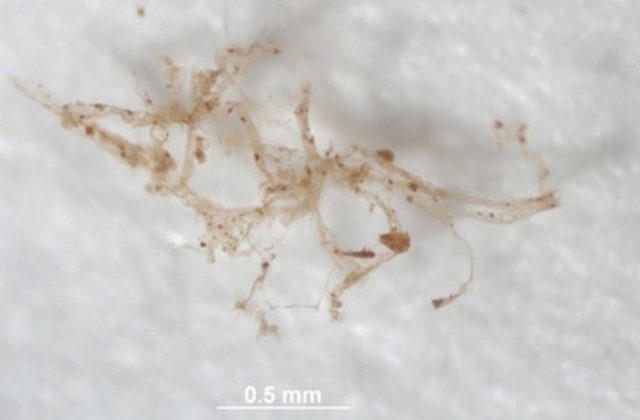MI weekly selection #159

Unfossilized dinosaur blood vessels discovered
Blood vessels from an 80 million-year-old duck-billed dinosaur never fossilized and still hold tissue. The vessels are from the leg bone of a Brachylophosaurus canadensis found in Montana. To determine that the vessels were truly organic matter from the dinosaur and not bacteria, scientists used high-resolution mass spectroscopy and detected the presence of myosin, a protein associated with blood vessel walls.
Lead on 6,000-year-old tool may be oldest smelting example in Levant
A wand-like artifact made of lead and wood has been found in a 6,000-year-old grave in the Ashalim Cave in Israel, and it may be the oldest example of lead smelting in the Levant, researchers say. The small object, not much bigger than a pocket knife, suggests that the people of the time period knew how to smelt lead during the Late Chalcolithic period, an era better known for copper work. The lead appears to have come from Anatolia, and because the tool shows signs of wear and was buried close to an individual, it must have been considered valuable.
Male crickets find mates by startling them with bat-like chirps
Some male crickets may use a high-frequency chirp that sounds like the call of a hunting bat to startle potential mates into revealing themselves, a study suggests. The frightened females shudder when they hear the sound, allowing the males to locate them. Researchers say the communication evolved from males impersonating bats and shows how communications systems can evolve over time.
German scientists reach nuclear fusion milestone
German physicists say they have been able to briefly generate a superheated helium plasma inside a vessel as part of its development of energy from nuclear fusion. The physicists are part of a project that has spent $1.1 billion over nine years to develop nuclear fusion as a viable energy source.
New computer program learns concepts with single example
A computer model that can learn new concepts from a single example, much like humans do, has been created. Bayesian Program Learning works differently than deep neural networks, which are trained to recognize images and behaviors by exposure to large sets of examples. The new program was able to recognize a series of handwritten characters after being exposed to few examples, and in some cases just one.
1 comment
[…] Posted in Noticias, Humanities & Social Sciences, Science, Technology, Weekly Selection | 0 comments […]